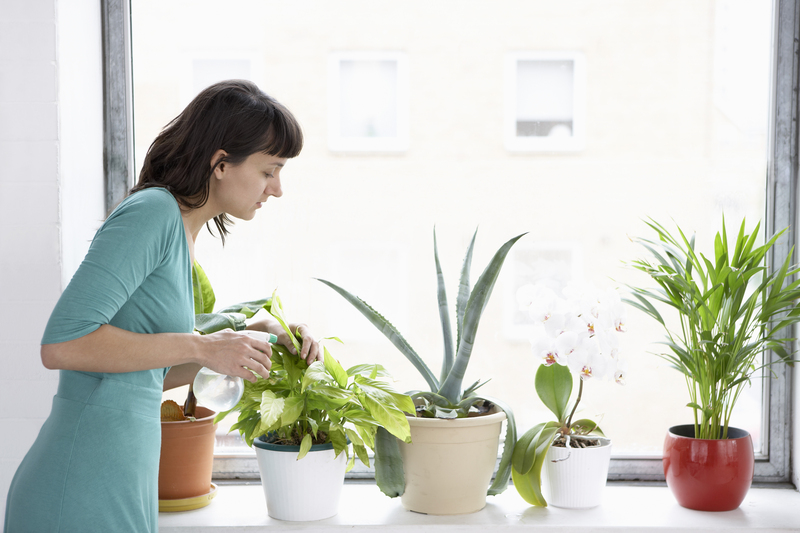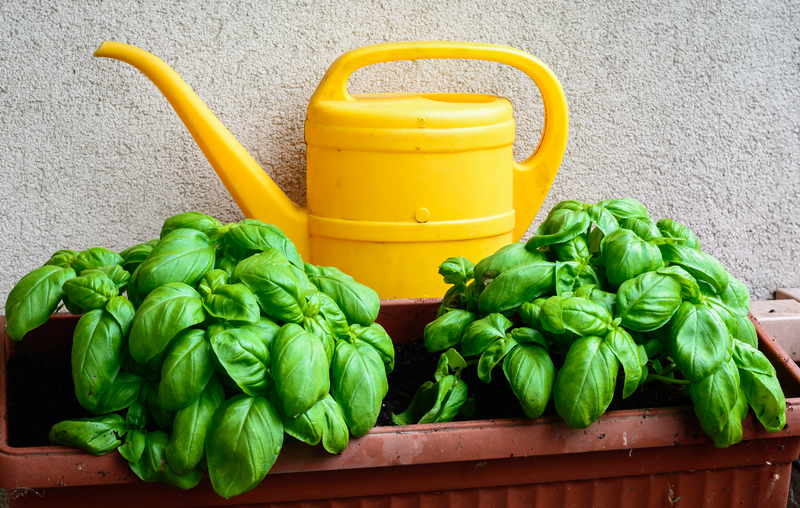Blooming Marvels: Essential Orchid Care
Posted on 07/09/2025
Blooming Marvels: Essential Orchid Care
Orchids have captivated gardeners for centuries with their ethereal beauty and diverse forms. Known for their exotic appearance and fascinating growth habits, these ornamental plants stand out as icons of tropical elegance and decorative charm. However, to coax their marvelous blooms, understanding essential orchid care techniques is vital. In this comprehensive guide, we'll delve into every aspect of orchid cultivation--from choosing the right variety to mastering watering, lighting, and beyond. Whether you're a budding enthusiast or a seasoned grower, our tips will ensure your orchids not only survive but truly thrive.
Understanding Orchids: The Basics
Orchids are members of the family Orchidaceae, boasting over 25,000 species and more than 100,000 hybrids. These unique flora come in an array of shapes, sizes, and colors, making them a favorite among plant lovers worldwide. Unlike most houseplants, orchids can be epiphytic, meaning they often grow attached to trees rather than rooted in soil. This trait shapes their care needs and makes optimal orchid maintenance fascinatingly different from conventional gardening.
Why Orchids are Special
- Long-lasting blooms: Many orchids flower for months, providing enduring beauty.
- Variety: From Phalaenopsis (moth orchids) to Cattleya and Dendrobium, there's a species--or hybrid--for every environment.
- Air-purifying properties: Orchids contribute to a healthier indoor atmosphere.
- Symbolism: These blooms often symbolize luxury, strength, and rare beauty.

Choosing the Right Orchid for Your Home
Not all orchids are created equal when it comes to care. The most popular houseplant varieties include Phalaenopsis (moth orchids), Cattleya, Dendrobium, and Oncidium. Each brings its own charm and care requirements.
Top Beginner-Friendly Orchids
- Phalaenopsis (Moth Orchid): Tolerant and widely available, ideal for first-timers.
- Dendrobium: Requires slightly more attention, but rewards caretakers with stunning sprays of flowers.
- Cattleya: Prized for their large, fragrant blooms; best for those with some experience.
- Oncidium: Known as "dancing ladies," they are appreciated for their fluttering blossoms and resilience.
Consider your home environment--temperature, humidity, and light levels--when choosing an orchid. Minimize frustration and maximize your blooms by selecting varieties that match your living space.
Essential Orchid Care: Conditions for Flourishing Blooms
To unlock the full potential of your orchids, you need to replicate the conditions of their natural habitat. This means understanding the crucial balance of light, watering, humidity, and nutrition. Follow these principles for expert orchid cultivation at home:
Lighting: Finding the Sweet Spot
Orchids are generally fond of filtered indirect sunlight. Too little light, and they won't bloom; too much, and their leaves could scorch.
- Place east- or south-facing windows for bright, indirect exposure.
- Check leaf color: medium green indicates ideal light, while dark green means not enough sunlight, and yellowish leaves signal overexposure.
- Use sheer curtains to protect from harsh midday rays.
Watering Wisdom: The Art of Moisture
Orchid watering is perhaps the trickiest part of orchid care. Most varieties do not tolerate soggy roots, as they are adapted to periods of dryness.
- Allow the medium to nearly dry out between waterings. Touch the mix - if it's dry an inch down, it's time to water.
- Water thoroughly: Let water run through the pot drainage holes. Never let orchids sit in water.
- Frequency: Most orchids require watering every 7-10 days, but needs change with temperature and humidity.
- In higher humidity, water less; during dry periods or when plants are in active growth, water more.
Pro Tip:
Use tepid, non-softened water (rainwater is excellent) to avoid salt buildup and leaf spots.
Humidity: Emulating the Rainforest
Originating from the tropics, most orchids love high humidity. For optimal blooming and root health, aim for 40-70% relative humidity.
- Group orchids together--they'll create a microclimate.
- Use a humidity tray: Place pebbles in a shallow tray filled with water under the pots, ensuring pots don't sit directly in water.
- Regularly mist leaves, but avoid letting water gather in the crown (to prevent disease).
- Utilize a home humidifier, especially in winter.
Temperature: Striking the Right Range
Orchids generally thrive in the same temperatures as people do: 65-75?F (18-24?C) during the day, and 55-65?F (12-18?C) at night.
- Maintain stable temperatures. Sudden fluctuations can stress the plant and halt blooming.
- Many orchids benefit from a slight nighttime temperature drop, mimicking natural conditions and often triggering flower spikes.
Nutritional Know-How: Feeding Your Orchid
Fertilizing is crucial for essential orchid health. Use a balanced, water-soluble orchid fertilizer (typically 20-20-20) diluted to half-strength.
- Feed every 2-4 weeks during the growing season. Reduce feeding frequency in winter.
- Flush the potting medium with water once a month to prevent salt buildup, which can damage roots.
- Never fertilize a dry plant. Water first, then apply fertilizer to avoid root burn.
Potting and Repotting: Giving Orchids Room to Grow
Orchids require specialized potting mixes--never standard soil. Most thrive in loose, well-aerated mediums like bark chips, sphagnum moss, charcoal, or coconut fiber. Repot every 1-2 years to prevent root rot and aeration issues.
Steps for Repotting Orchids
- Timing: Choose a time after blooming, when new growth appears.
- Remove plant gently from its pot, shaking off old medium and trimming any dead or rotten roots.
- Place the orchid in a clean pot just large enough to accommodate the root mass.
- Fill with fresh, moistened orchid mix, keeping the base of the leaves above the line of the medium.
- Wait 5-7 days before watering to allow any root wounds to heal.
Common Orchid Issues & Troubleshooting
Even with premium orchid care, problems can arise. Fortunately, many are easy to address with a vigilant eye and quick action.
Yellowing Leaves
- Natural aging: Older leaves gradually yellow and fall off.
- Overwatering: Roots can rot and fail to supply nutrients.
- Excess light: Leads to stress and sunburn.
Buds Falling Off (Bud Blast)
- Temperature fluctuations: Keep temperatures steady.
- Low humidity: Mist regularly and use humidity trays.
- Drafts or sudden moves: Place orchids away from vents or doors.
Pest Problems
- Mealybugs and scale: Wipe leaves with a cotton swab dipped in rubbing alcohol.
- Spider mites: Increase humidity and rinse plants with water.
- Avoid harsh chemical treatments, which can damage sensitive orchid tissues.
Roots Growing Out of the Pot
These "air roots" are normal and healthy for epiphytic orchids. Don't trim them off; instead, mist occasionally and let them grow.
Advanced Tips: Achieving Repeated, Spectacular Orchid Blooms
So your orchid has flowered--now what? Here's how to keep it blooming year after year:
- After bloom removal: Prune the spike just above a node for phalaenopsis; other types should be cut at the base.
- Rest period: Many orchids need a brief dormant period after flowering--reduce watering and feeding until new growth appears.
- Temperature drop: For moth orchids, lowering nighttime temperatures by 10?F (5-6?C) can trigger reblooming.
Patience is essential. Orchids may take months to rebloom, but with attentive care, those spectacular marbles will return.

Orchid Care FAQs
- How often should I mist my orchid? In dry climates, mist lightly every 2-3 days. In high humidity, reduce or skip misting to avoid diseases.
- Can I grow orchids outdoors? Many orchids flourish outdoors in mild, frost-free areas with filtered sunlight.
- My orchid's leaves are wrinkled--why? Usually, shriveled or wrinkled leaves signal underwatering or damaged roots.
- Should I cut off orchid air roots? No, air roots are normal and help the plant absorb moisture. Only trim if dead or diseased.
Conclusion: Celebrate the Wonders of Orchid Care
The journey of caring for orchids is both a science and an art. By providing the right balance of light, water, humidity, and nourishment, your orchids can become blooming marvels in any home. Remember: experiment, observe, and adjust your techniques to meet your plant's unique needs. With these essential orchid care tips, your reward will be breathtaking displays that last for years to come. Happy growing!

